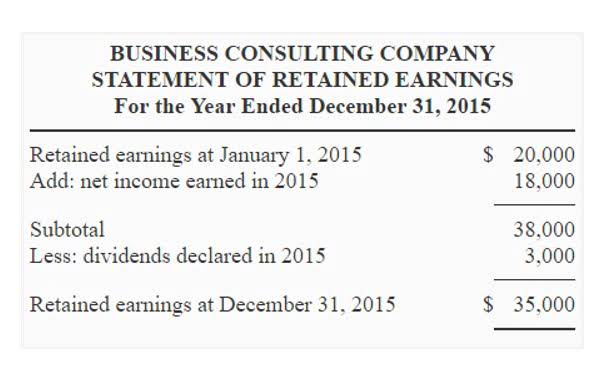
Capital Business Solution’s nonprofit fundraising software training assists in understanding how to prepare financial reports for nonprofit organizations. As we have discussed above, a nonprofit has to record all its expenses in classifications. The functional expenses account is the record where accountants or bookkeepers classify and store all the functional expenses.
“Quality of work is exceptional and valued contributor on our board.”
Many expenses incurred by organizations, however, are not so straightforward. The cost that goes into the arrangement of these programs is recorded under the Program Category. It also helps the board in analyzing that the money is allocated in fair and required activities. The record helps the trustees, the board, and the organization in keeping track to achieve the greater mission and purpose. Every organization incurs expenses in order to carry out operations or to generate revenue in the longer process. In nonprofit organizations, these expenses are made solely to carry out operations.
Summary of Key Points
Indirect allocation is used when expenses are attributable to multiple categories. Management will allocate these items based on estimates, considering the nature of the expense and how it relates to the functional category. See the most common types of indirect allocation and allocation methods below. Costs that can be readily identified as pertaining to a specific category are charged directly to that function. For example, if an organization formed for the purpose of providing financial assistance to students disburses a scholarship, that full amount would be recorded under program services.

Free Resources
As with any other accounting-related matter, documentation to support the allocations is the key. Functional expense allocation is the process by which a nonprofit organization’s accountant or bookkeeper classifies each expense by its functional classification. To better QuickBooks grasp functional expense allocation, it helps to understand why it’s important for nonprofit organizations in particular to report their expenses by function.
- Our blog post outlines several common mistakes, such as misclassification of expenses and lack of detail.
- This statement is designed to provide transparency and detail on how funds are spent across different activities, distinguishing between program services, management and general operations, and fundraising efforts.
- Nonprofit leaders and donors often lack an understanding of what constitutes fundraising expenses.
- For example, salaries of a fundraising employee directly pertain to fundraising and should be wholly allocated to the fundraising category.
- Gathering necessary information is a crucial step in any decision-making process, project planning, or report preparation.
- For example, “salary” is a straightforward line-item on a for-profit financial report.
- Looking at the number of people working on each program at the nonprofit business and the expenses they accrue, one can determine each individual employee’s and program’s expenses.
- Following the Financial Accounting Standards Board requirements, all non-profit organizations in the US now have to declare their expenditures according to their practical classification and their natural classification.
- Your reports can then tell you how close you are to your plan for each activity and whether you need to make any course corrections.
- Our experienced nonprofit accountants at Capital Business Solutions have all the details you need to create a statement of functional expenses for your or your client’s nonprofit business.
- As nonprofit accountants, it’s vital to know the ways to report expenses to the IRS for your nonprofit clients, and one of the most important parts of that is understanding the role of a statement of functional expenses.
Like a business issues Business Statement, a nonprofit has to issue an Accounting for Churches Activity Statement. This statement records all the expenses, costs, and revenue generated by the nonprofit organization in a given period of time. This helps in recording and keeping a track of all the expenses and income statements that the nonprofit experiences. This helps in understanding the allocation of the money as well as in keeping a track of the direction and achievement the organization is making towards the end goal. Functional expenses are reported by their functional classification and recorded in a Statement of Functional Expenses.
What are Functional Expenses?
Like a profit making business, a nonprofit has its own share of expenses and transactions. The accounting specifications for both kinds of organizations are set to be different. One of mandatory accounting reporting for a nonprofit is to analyze the natural expenses based on their function. This analysis is mostly done through the Statement of Functional Expenses (SOFE.) SOEF is a very efficient method of maintaining the accounting equation as well as this valuable information.

What Is a Statement of Functional Expenses?
The results of a carefully prepared SOFE are often enlightening and can drive decision-making. Nonprofits may also choose to regularly report functional expenses as part of the Statement of Activities or within notes to the financial statements. Fundraising expenses are those incurred in the process of raising resources to support the nonprofit’s activities. This category includes costs related to the planning and execution of fundraising events, advertising, public relations, and the salaries of staff engaged specifically in fundraising activities. These expenses are vital statement of functional expenses for maintaining and growing the financial capacity of the organization, allowing it to continue and expand its program services. Management and general expenses include costs that are necessary for the overall administration and management of the nonprofit organization.

What Nonprofits Need to Know About Functional Expenses
Operating expenses distribution involves the system by which an accountant or bookkeeper of a non-profit entity classifies each cost according to its functional classification. For Non-profit organizations, it is necessary to report their expenditures by role to help understand the functional distribution of expenses. For example, a fraternal organization may choose to break out its program service activities between categories such as chapter services, conferences and conventions, housing programs, etc. Doing so provides greater insight to prospective donors and other readers of the financial statements as to how the organization is using its resources. Each of the general functional expense categories can be further broken down to specific subgroups that more clearly classify the nature of the organization’s expenses. A nonprofit organization, just like any other organization runs on monetary transactions, assets, and liabilities.
Leave a Reply